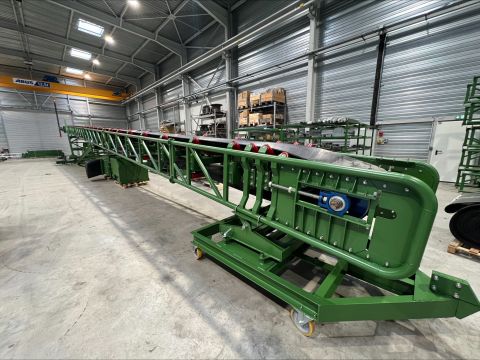


News

Although Belt Conveyors are systems for transporting products from one place to another, they are not just conveyor belts, even if that's the name regularly used, and can be employed in a variety of industrial, agricultural and commercial applications.
Belt Conveyors are generally made up of a rubber belt wound around bearings, enabling materials and products to be transported along a production or routing line in a particularly adapted way, and in particularly demanding contexts and environments.
While the principle of Belt transmission may seem to be lost in history, dating back to antiquity, its use and advantages have constantly led to technical innovations and improvements, depending on the context in which the principle is used.
This has gone so far as to disassociate the usual "conveyor belts", generally small in size or associated with shopping malls, treadmills and treadmills, from the development of Belt Conveyors and conveyor belts, larger in size and far more robust in design.
However, it's not just a question of dimensions, but of the multiplicity of load types and the contexts in which they can be conveyed.
The mechanization of industry and the development of high-quality materials have led to the design of industrial conveyor belts for a wide variety of applications.
Fromproduction lines to the transport of bulk loads, metals, ore, wood... and even airport baggage: "industrial" conveyor belts are diversifying, offering flat or convex surfaces, with multiple possibilities of inclination or orientation.
While this saves considerable time and productivity, it also improves working conditions for all those involved in production chains in a wide range of fields, from industry to agriculture.
Generally made of rubber, and with lengths and widths adapted to the desired use, Belt convey ors are driven by motorizations and gearmotors whose torque and power are scrupulously calculated according to the loads conveyed and the desired speed.
The design work carried out by qualified engineering and design departments not only ensures the machine's strength and long service life, but also the safety of the people and loads being conveyed.
After all, it's not just a question of transporting a load from point A to point B, it also has to be done under optimum conditions.
All industrial conveyor belts, whatever their design or length, are subject to regular servicing and maintenance operations, which must be carried out scrupulously.
Today, conveyor belts on production and packaging lines, or on construction and gold processing sites, can be several hundred linear meters long. This not only complicates the maintenance of these machines, but also requires increased training for the people in charge of these operations.
A solution for standardizing and smoothing the acquisition cost of conveyor belts: LLD or LOA leasing. Just like consumer goods, Belt Conveyors can be made available on advantageous financial terms to control maintenance, costs and investments.
Another solution for occasional handling needs, the purchase of second-hand conveyor belts enables you to opt for a reliable, low-cost solution by acquiring a fully overhauled machine.